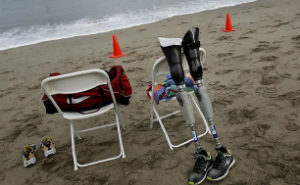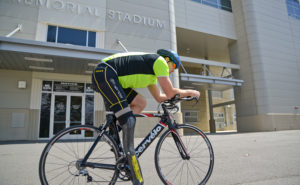Approximately 2 million Americans have undergone an amputation. Although the reasons for amputations may vary, what amputees have in common is decreased mobility from limb loss as well as residual limb pain. However, the following advances in orthotics and prosthetics have seen most amputees regain significant mobility following surgery.
New artificial nerves
Prosthetics allow you to regain mobility by mimicking what the lost limb used to do. Despite these advancements, there are limitations to what the prosthetic device can do. The human body is extremely complex, and your sense of touch is among the most challenging functions of it to recreate with a prosthetic hand. Thousands of sensors work together to process touch, and when you lose a limb, you also lose the sense of touch.
However, this may soon change, as scientists have created new artificial nerves that work just like the sensors to process and communicate information related to touch. Soon, artificial limbs will be able to sense and process touch and distinguish between textures and pressures. Even better, the new artificial nerves can be produced organically, making the cost of production low enough to enhance affordability.
Shoe orthotics for lower back pain
Researchers are still conflicted about how orthotics work to relieve pain, but the important thing is that custom orthotics can indeed work. New research shows that custom foot orthotics can significantly lower back pain even without further treatment measurers.
If you experience chronic back pain, you may no longer have to rely on prescription medication. Adding chiropractic care leads to higher improvements in function and could help you live a normal life without too much pain.
Blade prostheses
This controversial invention lets athletes run, ski, climb mountains, and compete in any other area alongside those without prostheses. Although there is no solid proof that blade prostheses provide an advantage over athletes who compete without them, the consensus is that this 40-year-old invention continues to change the lives of amputees who thought they could no longer stay active. Advancements are ongoing, and the newest blades are lighter and allow for an even better sprint.
Microprocessor knees
If you require orthopedic services following an amputation, microprocessor knees, or smart knees, are another major leap in prosthetics. When attached to your residual limb, this genius technology allows you to have a more natural gait and reduces your risk of falling, thus improving your quality of life post-amputation.
Almost two decades of research have resulted in advanced knee prostheses that allow you to take the stairs, walk backward, relax while standing, and assume an almost natural gait even when walking on the sidewalk or other uneven ground. All this is done with little effort.
Brain-controlled prosthetic devices
The last few decades have seen tremendous improvements in prosthetic devices. From just mere attachments to replacing a lost limb, today’s devices are capable of performing a range of activities. Among these huge leaps is the invention of brain-controlled prosthetic devices.
With this, amputees will be able to control limb movements with their brain, just the way you would control hand or leg movements. The science behind this involves electrodes that mimic sensory signals, and with the help of sensors in the residual limb, prompt the brain to send signals to move the limb just as you would move a hand or leg.
For more information
The loss of a limb is a major event requiring major changes if you are to regain your independence. However, prosthetics and custom orthotics continue to shape the future of amputees by giving them hope and a chance at a normal life.
For more information, contact Horton’s Orthotics & Prosthetics today at (501) 683-8889 to learn how you can enjoy these new changes.



